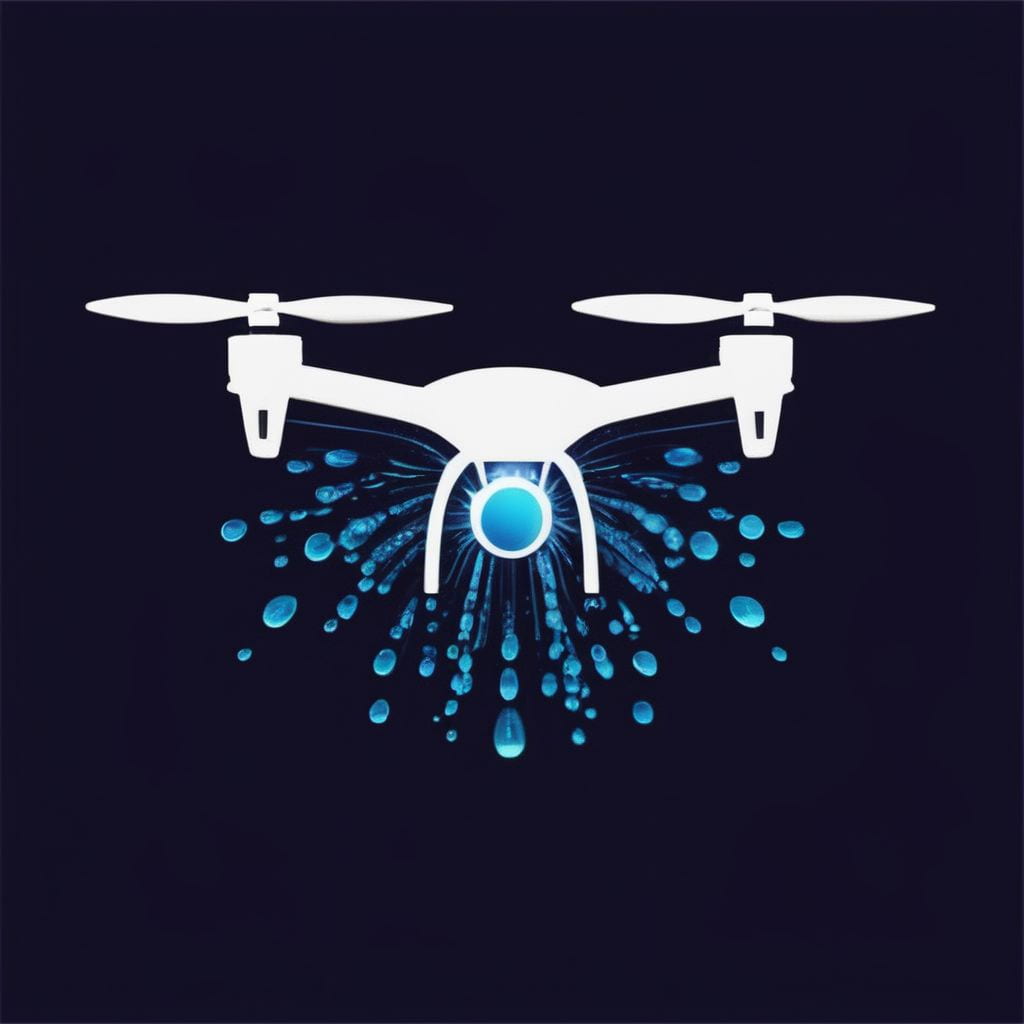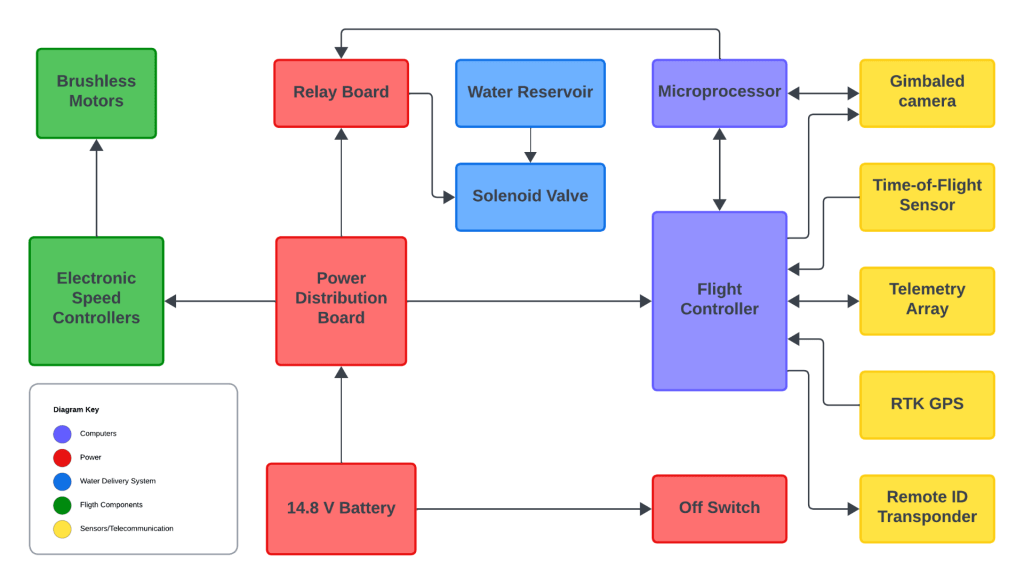
Team Name
DRO
Timeline
Fall 2023 – Spring 2024
Students
- Nick Parker
- Roberto Azahar
- David Qian
- Jamie Wilson
- Alec Babaa
Sponsor
Dr. Christopher McMurrough
Associate Professor of Instruction – The University of Texas at Arlington
Computer Science and Engineering
Abstract
Raytheon, a national leader in aerospace defense systems, this year sponsored the Raytheon Drone Competition, an intercollegiate war game pitting interdisciplinary engineering teams against each other in demonstration of autonomous unmanned vehicle system capabilities. UT Arlington hosted several universities from the southern region of the US to compete against each other. Each university was responsible for creating highly performant autonomous ground and aerial vehicles which could each execute a variety of predetermined tasks.
Background
As unmanned vehicles of all traversal methods become more advanced, capable, and safe, the number of use cases suitable for their implementation drastically increases. Delivery of consumer goods, aid resources, and emergency services are all viable and emerging areas of interest for autonomous vehicle developers. While the defense sector has the highest adoption rate of autonomous vehicle use, unmanned vehicle platforms are capable of rapid retrofitting and minimal redesign to allow for agile maneuvering between markets.
Project Requirements
- Student teams must provide one (1) unmanned aerial vehicle (UAV) and one (1) unmanned ground vehicle (UGV)
- Each UGV and UAV must operate autonomously during the competition for the duration of their respective drive/flight
- UGVs must be capable of following predetermined paths across a football field (optional bonus: randomized path traversal)
- UAVs must be capable of unmanned flight from a pre-determined starting location to a designated landing position
- UAVs must be equipped with propeller guards
- UGVs must be equipped with visible 1’x1′ ArUco markers detectable from the air
- UGVs must travel at pre-determined speeds for each challenge
- UAVs must be able to identify ground targets indicated by equipped ArUco markers
- UAVs must be capable of delivering minimum 20 mL water payload on to target UGVs
- Teams must stay within the provided budget
System Overview

Results
The members of UT-Arlington’s CSE team were provided a tremendous opportunity to experience real-world development conditions and procedures as we worked under the advisement of UTA faculty and
Raytheon mentors. The task set before the team involved a steep learning curve due to a wide array of necessary technologies, many of which were new to members of the team. Despite initially slow progression as the team navigated the unmanned vehicle development landscape, continuous testing, development, and deployment proved to be a successful practice and served to ensure the production of a vehicle that would meet the competition’s requirements. The experience gained by working on a collaborative, interdisciplinary team has enriched each participant and allowed every member to expand their engineering skills in software, hardware, and general best practices. We would like to thank Raytheon and UT-Arlington for allowing us to participate in this exceptional opportunity.
Future Work
While the team was able to design and develop a UAV capable of fully autonomous flight and target acquisition, there are a number of identified areas where performance and stability could be improved. Due to the power constraints imposed by the multitude of necessary on-board electronics, the vehicle could be improved by using a secondary power supply for the compute and sensor components. This would free the main power supply to serve a dedicated role in powering the UAV’s four (4) motors.
Project Files
System Requirements Specification
Architectural Design Specification
References
- Autonomous Drone Platform Market. (2022, December 5). https://www.futuremarketinsights.com/reports/autonomous-droneplatform-market
- Ltd, R. a. M. (n.d.). Global Computer Vision in Navigation Market by component (Hardware, software), product (PC-Based Computer Vision System, Smart Camera-Based Computer Vision System), application – Forecast 2024-2030. Research and Markets Ltd 2024. https://www.researchandmarkets.com/reports/5367860/globalcomputer-vision-in-navigation-market-by